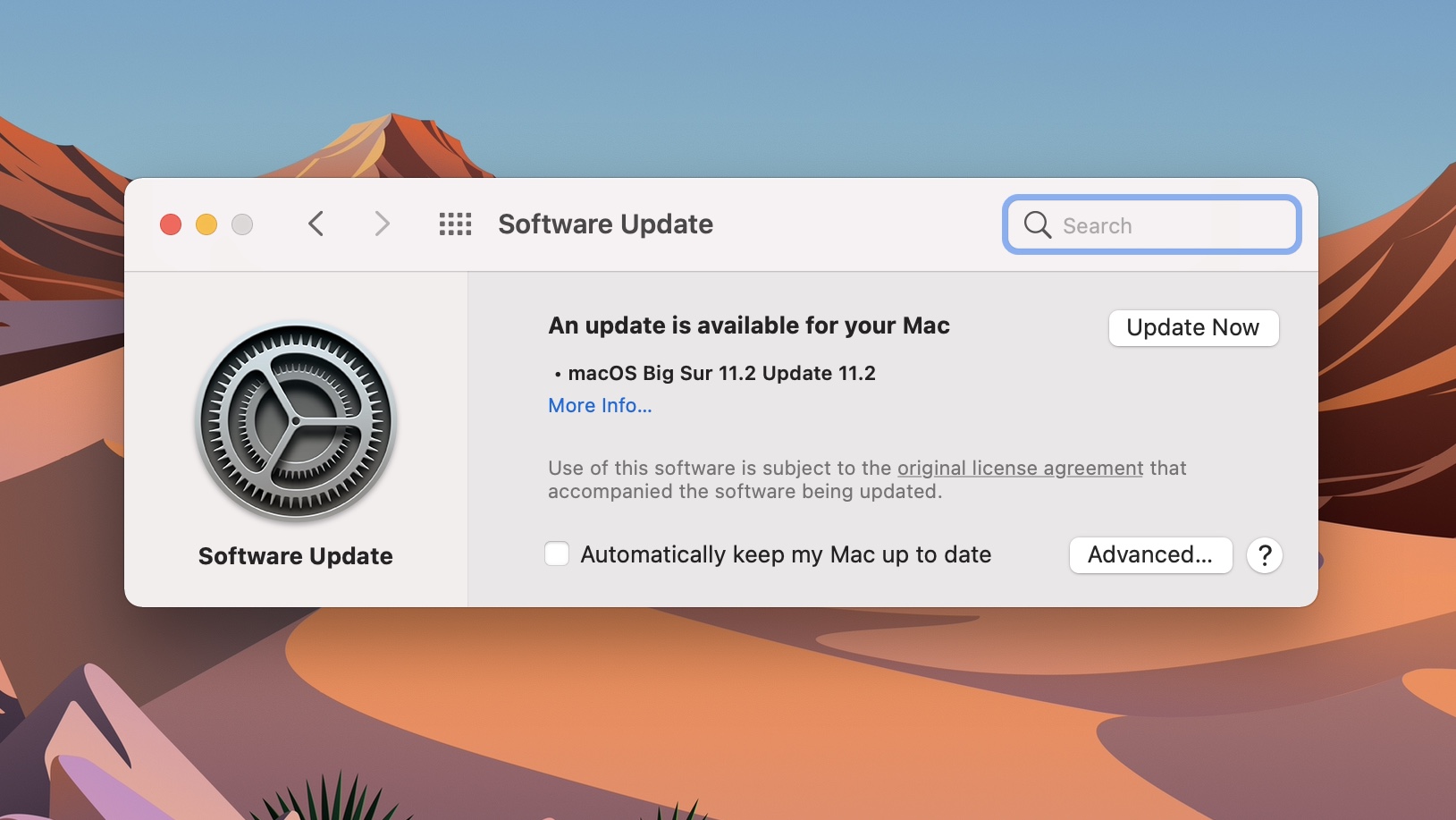MacOS 11.2 fixes major security bugs — update now
You'll want to hit Update Now and get macOS 11.2

You're going to want to download macOS Big Sur 11.2 now. Trust us.
The update, released Monday (Feb. 1), looks like a small update on paper, but it includes fixes to a ton of security flaws.
Apple's security notes documentation for the update lists 57 different CVE (common vulnerabilities and exposures) issues that are addressed by the update. While you don't need to know about all of them, a couple are important enough to get you to hit download.
- How to download and install macOS Big Sur
- MacBook Air vs Pro: What should you buy?
- Plus: All Macs can be hacked using this Linux security flaw: What to do
The most dangerous issues at hand are five different flaws that could let a malicious attacker wreak havoc by elevating their system privileges to cause chaos.
As is standard Apple policy, these fixes are also being released for systems running the two previous macOS versions, where applicable. Those are macOS Catalina 10.15.7 and Mojave 10.14.6, for those who didn't update to macOS Big Sur.
The lesser of these flaws, in which a local attacker could mess with your system, were patched in Crash Reporter, Endpoint Security and IOSkywalkFamily.
The more dangerous elevated privileges flaws were found in Kernel and Power Management, and while both were patched, Apple notes it is aware of reports claiming the former issue "may have been actively exploited."
Sign up to get the BEST of Tom's Guide direct to your inbox.
Get instant access to breaking news, the hottest reviews, great deals and helpful tips.
Multiple other Kernel fixes here give you more reason to update now. Two cases where a malicious application could execute arbitrary code with kernel-level (i.e., the core of macOS) privileges were patched.
The other big call-out from Apple's security notes comes in Messages. This is more about privacy, technically, but Apple notes that a user "removed from an iMessage group could rejoin the group," which is exactly the wrong thing you want to hear after you kicked someone out of a text and then gossiped behind their back. We didn't do such a thing — that's just a hypothetical.
However, Big Sur 11.2 doesn't address a serious flaw that was uncovered a day after the update was released. The vulnerability, first found on Linux systems, lets limited-user accounts gain full control of a Mac, and could be exploited by malware or remote attackers.
How to update to macOS 11.2
Fortunately, it's really easy to update your Mac to BigSur 11.2. The one piece of optional advice I have is to back up your system regularly and to check to make sure you have a backup before you update. This is more of an issue for bigger updates, but it's a good habit to form.
- Open System Preferences (Apple Logo > System Preferences)
- Click Software Update
- Click Update Now
Other macOS 11.2 features
The full release notes for macOS 11.2 note that Apple solved five other issues, including resolutions for external display issues and ProRaw photos and one annoying glitch where an admin password would not unlock System Preferences.
- External displays may show a black screen when connected to a Mac mini (M1, 2020) using an HDMI to DVI converter
- Edits to Apple ProRAW photos in the Photos app may not save
- iCloud Drive could turn off after disabling the iCloud Drive Desktop & Documents Folders option
- System Preferences may not unlock when entering your administrator password
- Globe key may not display the Emoji & Symbols pane when pressed

Henry is a managing editor at Tom’s Guide covering streaming media, laptops and all things Apple, reviewing devices and services for the past seven years. Prior to joining Tom's Guide, he reviewed software and hardware for TechRadar Pro, and interviewed artists for Patek Philippe International Magazine. He's also covered the wild world of professional wrestling for Cageside Seats, interviewing athletes and other industry veterans.
